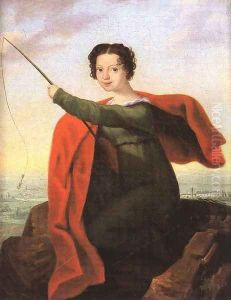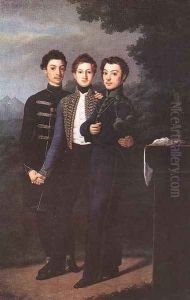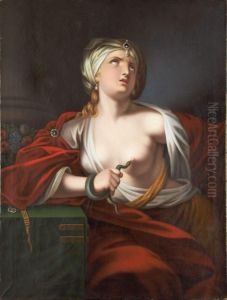Jozsef Czauczik Paintings
József Czakó, also known as József Czauczik, was a distinguished Hungarian painter born in 1781 in Levoča, which was then part of the Kingdom of Hungary (present-day Slovakia). He emerged as a significant figure in the early 19th-century art world, particularly within the Hungarian and Central European context. Czakó's work is often noted for its contribution to the Romantic movement, although his style also incorporates elements of Classicism, reflecting the transitional artistic tendencies of his era.
Czauczik's education in the arts commenced in Pest, where he initially engaged in studies that were not exclusively focused on painting. However, his profound interest and innate talent in art propelled him towards pursuing a more formal artistic education. He eventually found his way to Vienna, a pivotal center for art and culture in the Austro-Hungarian empire, where he studied at the Academy of Fine Arts. His time in Vienna was instrumental in shaping his artistic direction, exposing him to the works of classical masters, as well as contemporary trends in European art.
Throughout his career, Czauczik was particularly celebrated for his portraits and historical paintings. His ability to capture the essence of his subjects and to imbue his historical scenes with a sense of drama and emotion won him considerable acclaim. Among his notable works are several portraits of Hungarian nobility and figures of significance in Hungarian history, which played a key role in fostering a sense of national identity during a period of burgeoning nationalism in Hungary.
Despite his success, Czauczik's life was not without challenges. The political and social upheavals of the time, including the Hungarian struggle for independence and the broader European conflicts, impacted his career and the reception of his work. Nevertheless, he remained a respected and influential figure in Hungarian art until his death in 1841.
Czauczik's legacy is preserved in the collections of various Hungarian museums and galleries, where his works continue to be admired for their technical skill, emotional depth, and historical significance. He is remembered as a pioneer who contributed significantly to the development of Hungarian art in the 19th century, bridging classical influences with the emerging Romantic sensibility.


